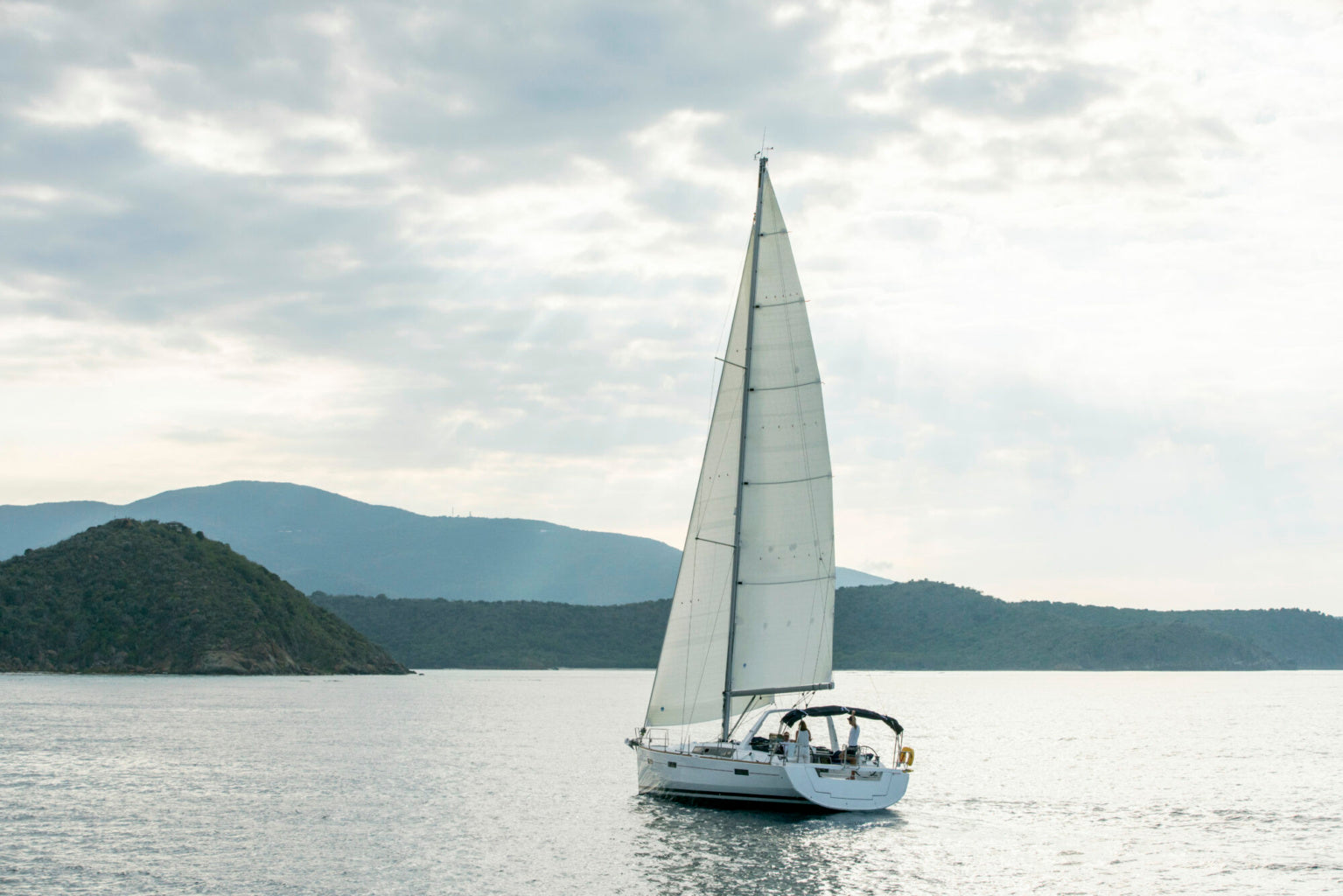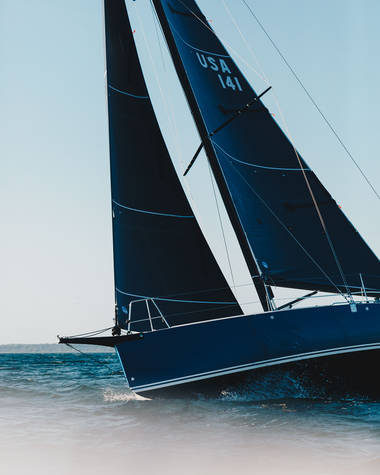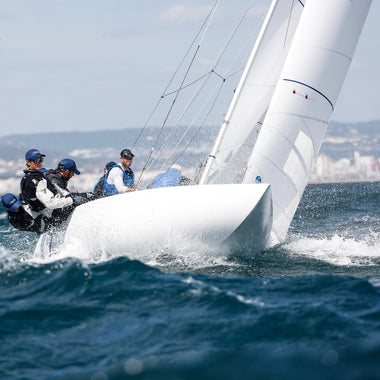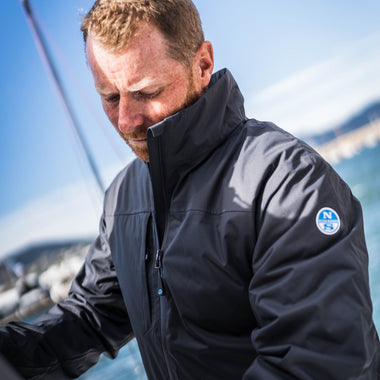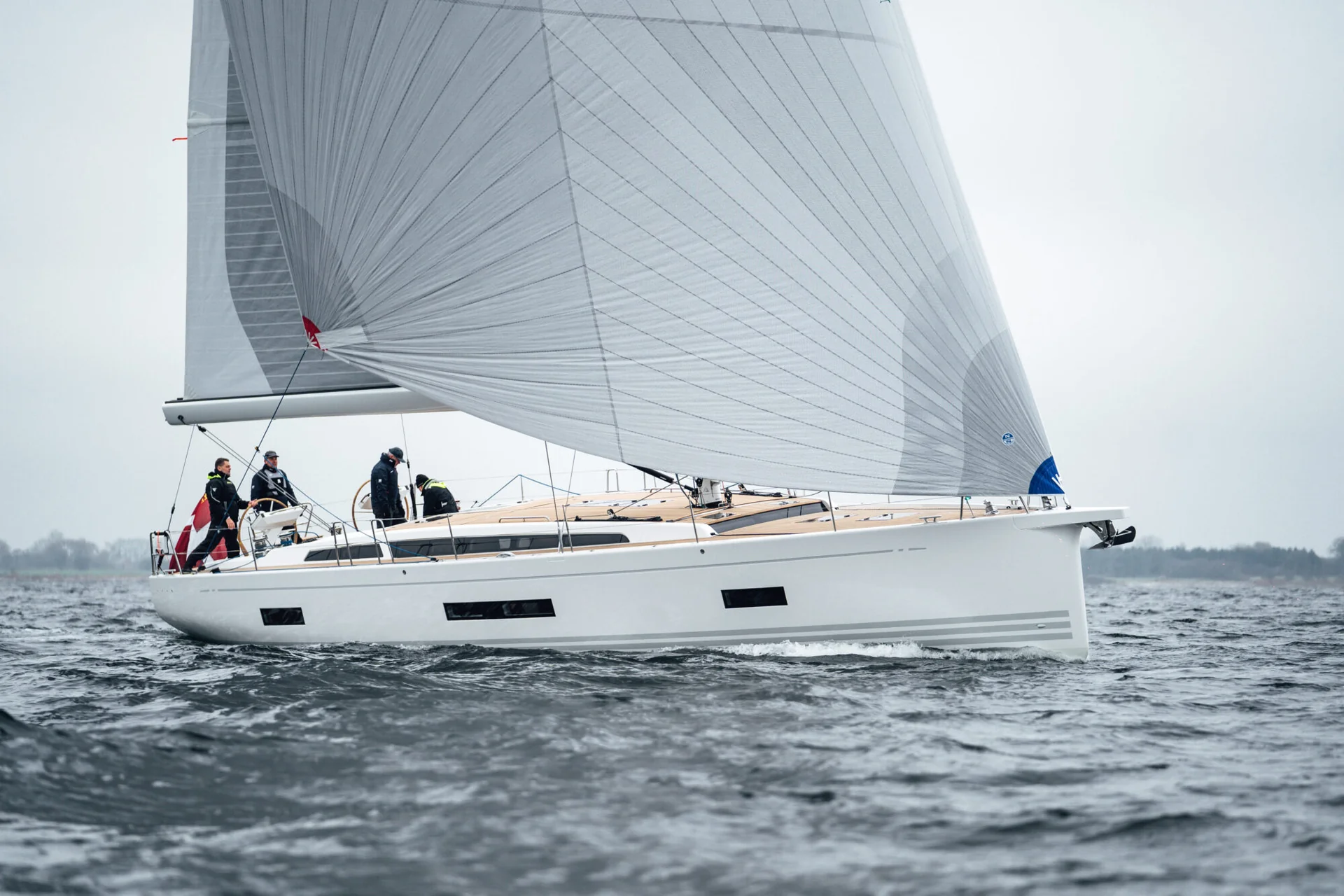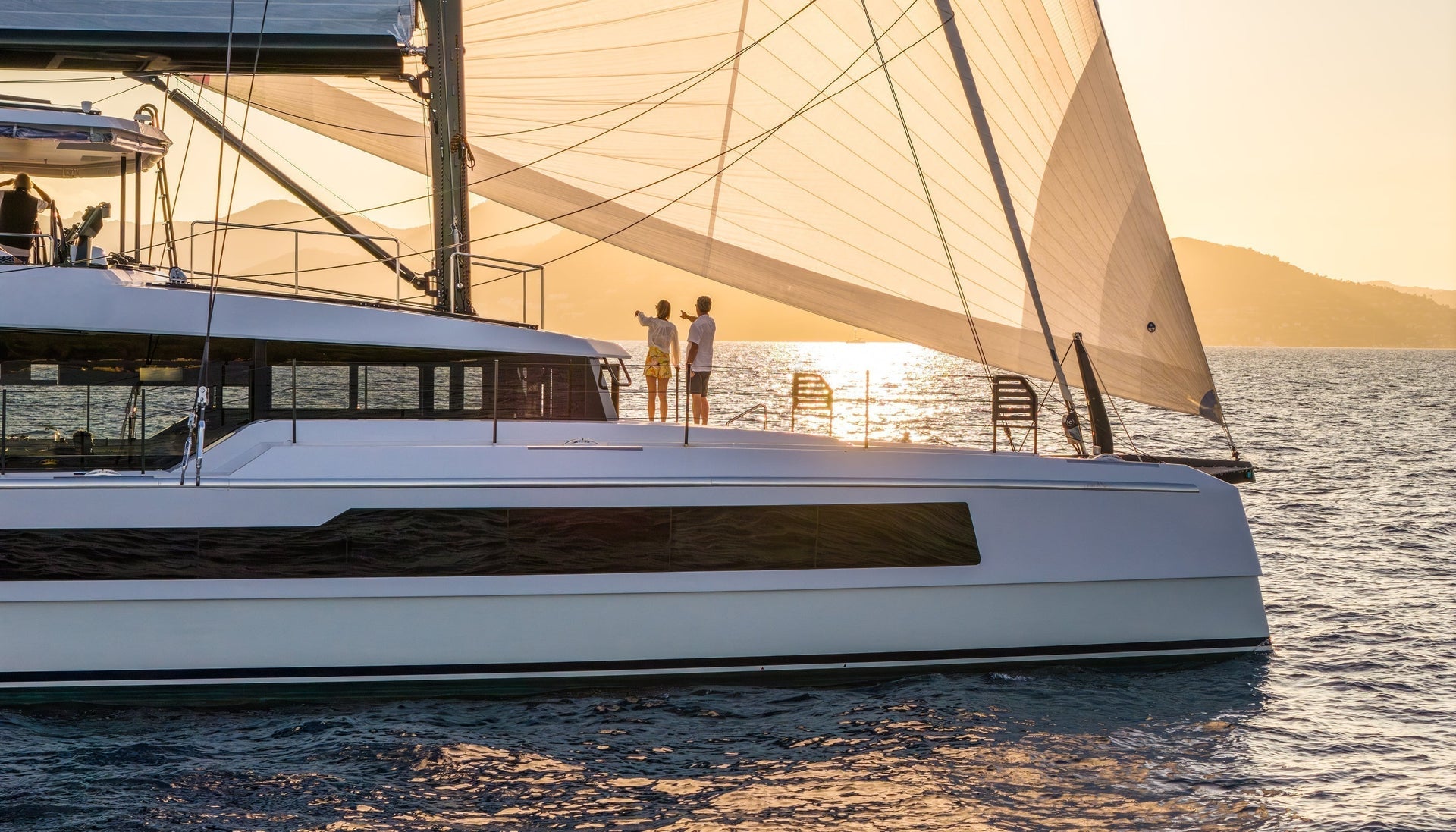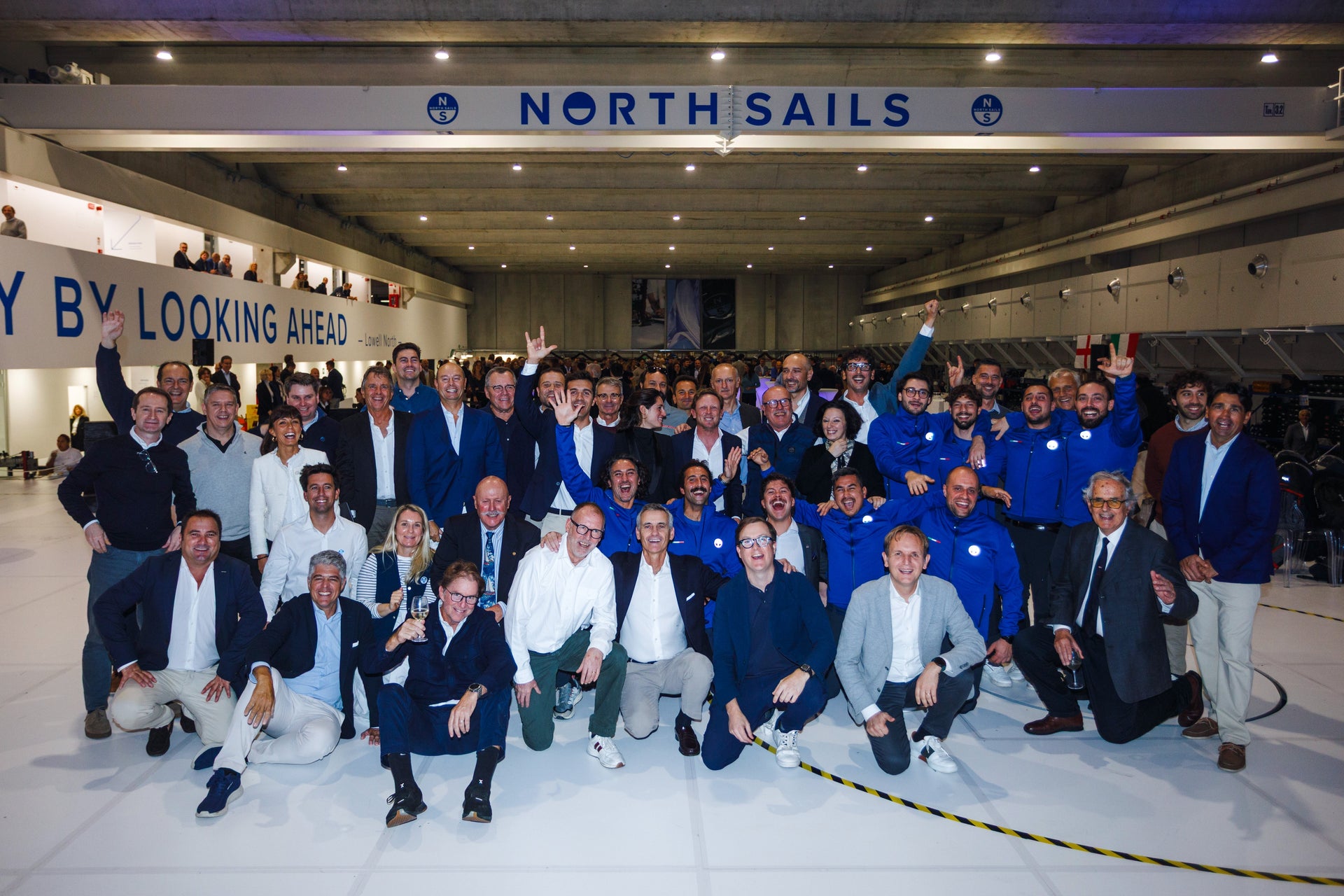CRUISING INVENTORY RECOMMENDATIONS FOR LIGHT AIR
INVENTORY RECOMMENDATIONS FOR LIGHT AIR CRUISING
Top Picks, New Additions, Rigging and Tuning Tips

Being prepared for whatever Mother Nature serves up is key to maximizing your cruising adventures. Our cruising experts share their inventory top pick, which sails to consider adding and light air rigging and tuning tricks.
An all-purpose cruising gennaker is a great first step. It offers a broad range of horsepower and can be used for higher and lower angles off-wind. Cruising gennakers are great for both tight reaching and broad reaching.
The Helix Furling Gennaker is North’s new option that is a reliable, top-down furling sail. The Helix Furling Gennaker is lighter weight and meant to be furled, providing easy, accessible horsepower that isn’t problematic. Most cruisers don’t sail upwind as often as they sail off-wind, which is why gennakers have become more popular and highly recommended as the perfect all-around sail choice.
Code sails are another great inventory option for more experienced cruisers. Code Zeros and G Zeros offer an extensive amount of power, which a lot of cruisers don’t realize until they’ve sailed with one.
The convenience of a full-batten mainsail outweighs the performance. It’s a quick option for boats with a lazy jack set up so at the end of your sailing day, you come in, simply let the halyard go and secure it to the boom. Enjoy your cocktails sooner! Full-batten mainsails also offer more support when it comes to sail shape. With standard cruising mainsails there is more time at the end of your day making sure your sail is put away properly. Keep in mind, your local North Sails service team can retro-fit any cruising mainsail with battens to help extend the life of your sail, improve sail shape, and make the derigging process quicker and easier. It’s standard to have reef points, especially in cruising sails, which will give more flexibility when it comes to reducing sail area which is key in long distance cruising, especially if weather is expected (or unexpected!).
Foam luffs on genoas also aid with flying shape if you are not ready to add a spinnaker or gennaker to your inventory. Foam luffs have more side to side symmetry and can assist with flying shape, especially for DDW angles.
There are an array of different sail options that can support cruisers of all kinds depending on their needs. Contact your local expert to get help deciding which options may be best for you.
View this post on Instagram
Upwind inventory top choices
3Di OCEAN is a great step up from traditional materials. It lasts longer, is lighter weight, has lower stretch, and provides more stability– which makes cruising more comfortable.
NPC CROSS-CUT is the preferred dacron option for everyday cruising. NPC RADIAN would be our recommendation for in-mast furling system setups. When it comes to headsails, a 135% genoa is a great place to start. Keep in mind, no sails want or like to be furled, so 3Di OCEAN is the most robust product that will last the longest and withstand furling.
Our Favorite Inventory Additions
For cruisers willing to leave the comfort of the cockpit, a spinnaker snuffer is the way to go. They are easy to hoist and when it comes time to douse, you simply pull a line, the sock comes down, and it drops on deck. This can be set up too where the sock drops directly into the front hatch.
If you are not up for going to the foredeck, that’s where the furler comes into play. Both options are affordable, but all depend on what you are willing to do and your set up. Furlers are also convenient when you want to leave the sail up for extended periods of time. Simply unfurl or furl whenever you want. External cables come into play depending on the furler you have and the sail type you choose. With North Helix Structured Luff, there is no external cable.
Rig Settings and Tuning
Moving the fairlead forward will allow for a more powerful sail shape. Halyard tension should be tighter in stronger wind and more sea state, looser in flatter water and lighter air. When it comes to weight placement, if you know you’ll be on the same tack for a long time, adjust things below deck accordingly. It’s good to accept a bit of heel, as this helps keep the sails powered up and keeps them full as the breeze dies off. Once you’re set up for speed, all you need to do is keep an eye on the instruments.
Outhaul should be eased, as well as cunningham and vang which controls leech twist. Too much twist in lighter air conditions will de-power the boat.
For downwind sail settings, you can float the tack when you are running. As the wind lightens up, you want the tack lower.
- Ease outhaul, cunningham, vang to control leech twist. You don’t want too much twist because that de-powers the boat
-
Floating the tack is an option:
- Running in more breeze you can raise the tack up
- Light air day you want the tack a little lower than you normally would
- Attachment points for non-conventional rigs: Sometimes the headstay doesn’t go all the way to the bow, so we install a pad eye in front of the headstay and a free floating block. You can purchase a keeper that will keep the tack from floating from side to side. Acts as a bowsprit with a fixed tack point. Tack will sit just above the bow pulpit, 3-4 feet from the headsail and with two snap shackles in the back and the right lines leading back to the cockpit makes an affordable/ simple option.
